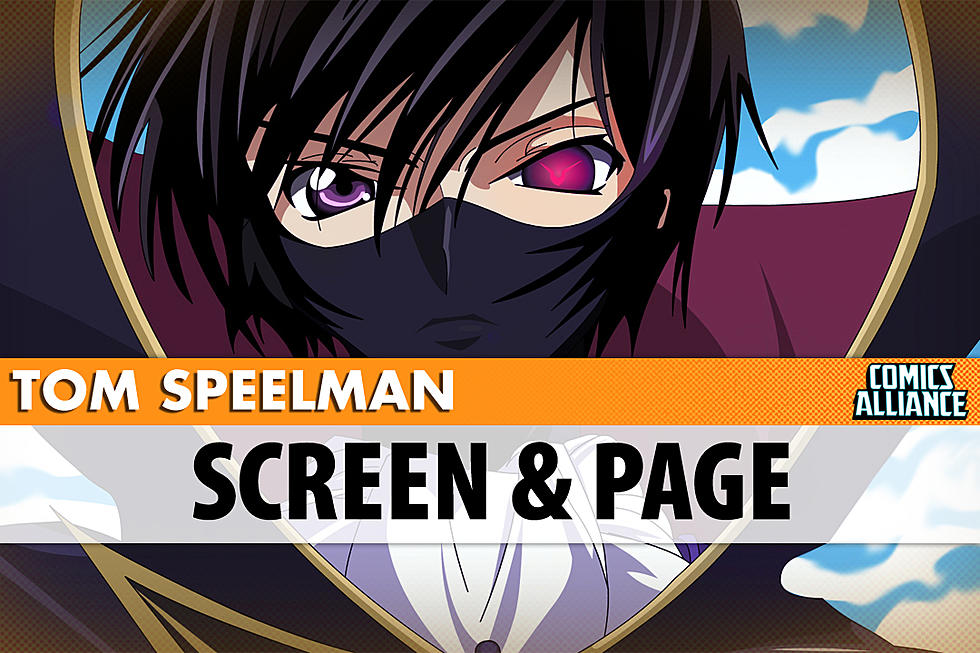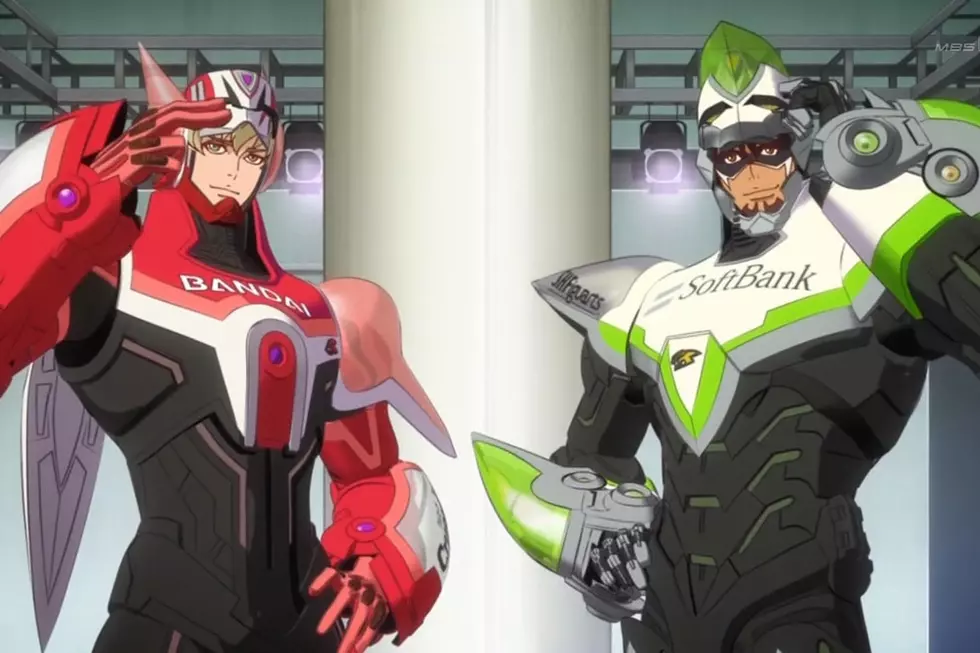
Screen & Page: Super Meets Star In ‘Tiger & Bunny’
About 90% of all anime made is adapted from manga. In a lot of cases, the manga's publisher produces the anime and is responsible for making sure it gets sold to other countries --- the better to increase awareness and manga sales.
But what about that other 10%? What about that anime show or film that proves to be such a huge hit that a manga adaptation --- often written or drawn by members of the production staff --- is inevitable? What stays the same between the screen and the page and what's different? What works, and what doesn't? That's what Screen & Page, aims to explore. For our first installment, we're examining one of my favorite anime, and one of the best superhero stories around today; Tiger & Bunny!
THE ANIME
The current anime trend of American-style superheroes started in 2009 with One Punch Man and continues today with My Hero Academia. Right in between is Tiger & Bunny, and its runaway Japanese success helped propel this craze forward.
A product of The Big O creator Keiichi Sato and legendary animation house Sunrise --- AKA the studio behind Gundam and Cowboy Bebop ---Tiger & Bunny (streaming on Hulu) aired for 25 episodes in 2011 and was a huge critical and commercial success. Anime News Network's Zac Bertschy described it as having "a really clever superhero premise that mashes up both Eastern and Western comic book sensibilities, adding a couple unique twists that give the whole thing a great satirical edge."
In Japan, the anime spawned not only a manga but also video games, a stage play, two anime films (one that retells the first couple episodes, while the other acts as an epilogue to the series) and, as Sunrise announced last fall at NYCC, an upcoming Hollywood movie produced by Ron Howard and Brian Grazer.
The show is not only a smart exploration of basically the entire history of superhero comics; it's a good sendup of reality TV and celebrity culture. And like every great superhero universe, it has a bench of characters you grow to love; my favorite is Dragon Kid, the pint-sized karate master who dresses like The Bride and shoots lightning.
So what's Tiger & Bunny about? The series takes place in the neo-futuristic Stern Bild City, a multi-level metropolis that's New-York-meets-Singapore with a giant "Justice Tower" at its center, and its own superheroes and villains. Capitalism being what it is, major corporations have stepped in to sponsor the heroes. Thus came HERO TV, a live reality show where each hero captures bad guys and competes for points, with every season's winner being crowned the "King of Heroes."
Kotetsu T. Kaburagi is nowhere near that title. Codenamed "Wild Tiger," and possessing "Hundred Power" --- which increases all physical abilities a hundred fold for five minutes --- he's more famous for causing tons of property damage than for rescuing people. Still, he has a genuine desire to help people, like his idol, the first superhero, Mr. Legend.
Unfortunately, good intentions don't make up for the huge debt he incurs; his sponsor company is bought out and shut down by mega-corp Apollon Media. Meeting with his new boss, Kotetsu is told he's getting a new, power armor-like costume, and he's paired up with a new hero, the cocky and rude Barnaby Brooks Jr. (who also has Hundred Power), to create the first hero tag-team.
The show is a mix of buddy cop dynamics, one-off stories focusing on other heroes, and a conspiracy about the death of Barnaby's parents that stretches all the way to the top. It all comes together in a tightly controlled way that's as confident and unified as any good comic book run. Every little glimpse of the world you see, you want more.
As I said, the series also riffs on superhero lore and history. From Kotetsu's Golden Age credo of wanting to help people, to classic Bronze Age melodrama involving happy-go-lucky hero Sky High and a robot, to the Watchmen-esque reveal that Mr. Legend (whose costume resembles the Comedian) has some pretty dark secrets, Tiger & Bunny takes the many modes and eras of superhero storytelling and has fun with them while being genuinely gripping and engaging.
THE MANGA
While the anime is unique for focusing on a middle-aged widower, the manga follows Barnaby's point of view. This not only gives the manga added value, but helps flesh out Barnaby a lot more.
As portrayed onscreen, Barnaby is a rather thin character.. He's introduced as a hostile, cocky jerk, and even with his tragic backstory, that doesn't really go away. As the wider truth of why his parents were murdered comes into view, it makes Barnaby more sympathetic --- but that only goes so far.
By grounding things in his POV, the manga puts Barnaby in a more understanding light. In the first two volumes, we get his thoughts on teaming up with Kotetsu and his perspective on the series' first five episodes. We see more memories of his childhood and the trauma he's suffered since the death of his parents.
That it blends well with its source material is entirely due to artist Mizuki Sakakibara. Working from Masafumi Nishida's original scripts and character designer Masakazu Katsura's concepts, Sakakibara --- a Marvel veteran who worked on Exiles and Marvel Knights 4 --- perfectly captures the look and detail of the show. While the CG hero suits don't translate so well to the printed page, Sakakibara gives the action scenes enough weight and dynamism to make up for it.
So in what order should you enjoy these? I would say watch the anime first, then pick up the manga, because it's the textbook definition of good side stories --- more time with a world and characters you like, and more adventures to cheer over.
More From ComicsAlliance

![Screen & Page: Meet Heaven’s Worst Angels In ‘Panty & Stocking With Garterbelt'[Love & Sex Week]](http://townsquare.media/site/622/files/2017/02/ps.jpg?w=980&q=75)





![Screen & Page: Honor The Covenant With ‘Blood-C’ [Fantasy Week]](http://townsquare.media/site/622/files/2016/10/blood-c-1.jpg?w=980&q=75)

